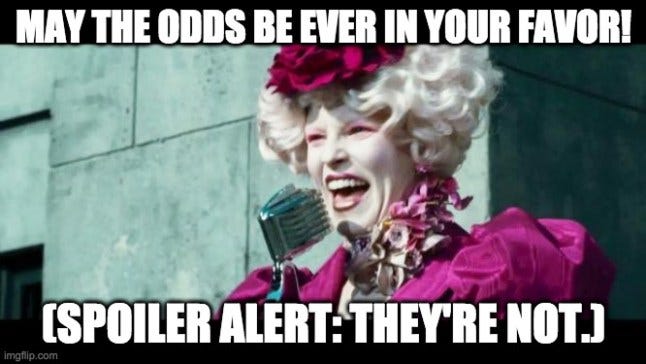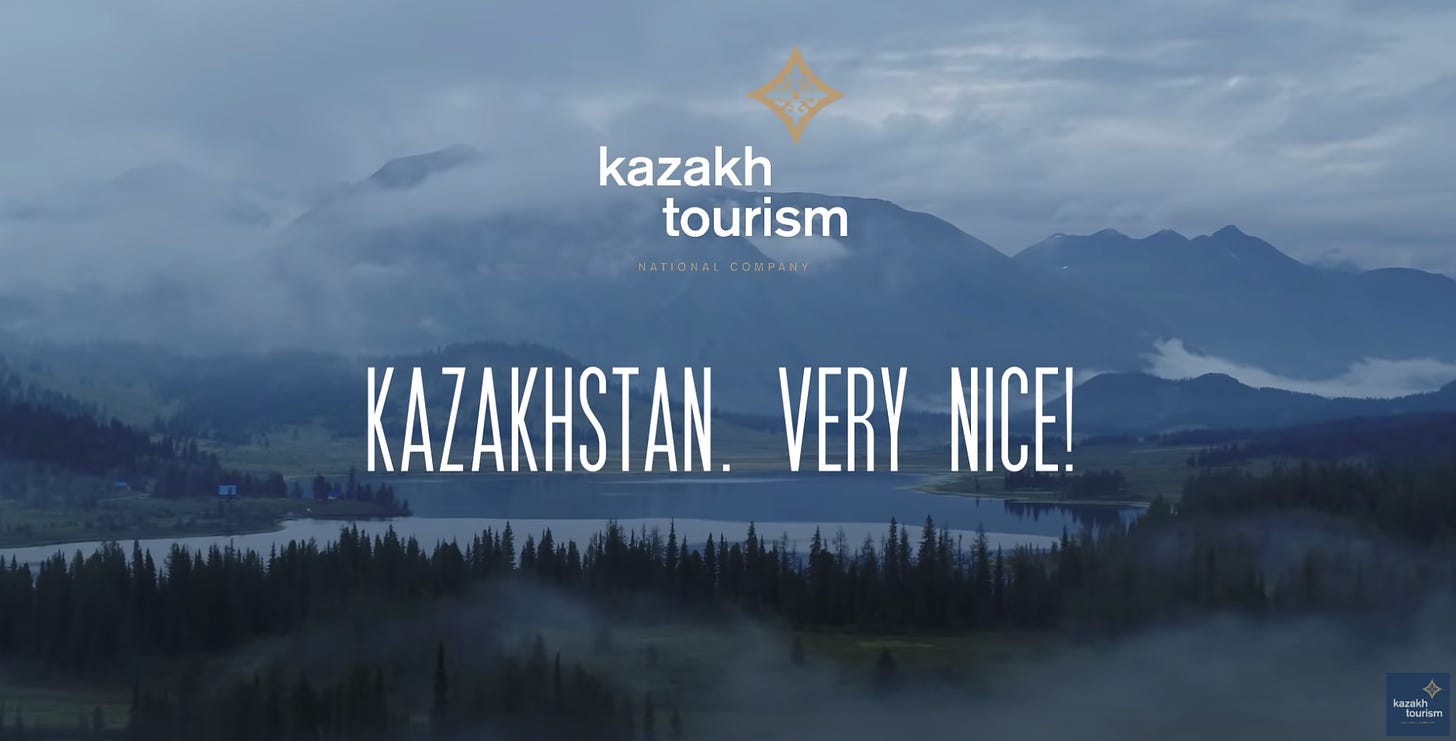Very Nice! (11/01/20)
Hey Friends,
Welcome back to Sunday School, my weekly newsletter to give you a boost in consuming interesting content.
If you haven’t already subscribed, I’d love for you to click this button:
If you've been reading Sunday School you know that this usually follows a standard format, but sometimes in inject my musings into this section. Today is one of those days. And today, I’m musing about job hunting.
My industry has been affected by COVID as much or more than any industry. Live meetings, events, and incentive travel aren’t happening this year, and for good reason. But it’s been hard to watch my friends and colleagues lose their job because this pandemic keeps going.
I finally lost my job at the end of August after five months of abnormal, uncertain work. It’s been a brutal year.
And so began the job search.
I don’t know if any of you have looked for jobs recently, but let me tell you…it’s one of the most mentally challenging exercises you can go through. It is THE most endless cycle of hope, no hope, excitement, despair, and all of it all over again. Unless you have an advanced degree or work in an ultra-specialized field, gone are the days where you can just submit a resume and be in the running for an interview.
That doesn’t happen.
If you’re looking for a job right now and are just applying for jobs on websites and job boards, the odds are NOT ever in your favor.

It’s now the beginning of November and I’ve finally accepted an offer for a new job that I’m really excited about. I got lucky and I found a place that feels like a perfect fit. But I didn’t get an interview by relying on my resume.
If you’re currently looking for a job or feel like you might be looking for a job at some point, I recommend this approach. It’s exactly what I did, and if you find the right company, it can work to perfection.
The summary:
Send a targeted cold email to someone with the company. Provide value, pique their interest, flatter them a little, and ask to meet.
Meet with them. Ask genuine, thoughtful questions. Glean from them what you can. Do it all while being a nice human.
Wait a bit and follow up, letting them know you’re interested in a position with the company. Have a conversation with them about why you’re a fit and see if they can recommend you to HR for an interview.
In this job market, one resume is a fish in a sea of thousands. You can’t rely on yours being the one that defeats the algorithm or randomly catches someone’s eye. Interviews come from connections, and it’s up to us to create our own.
Homeroom
My Essay: Peer Assessment Bias
This essay has been an idea I’ve been working with for a while and I finally got around to articulating it in writing. I got over 400 reads on Friday when I published.
In this essay, I explore the idea that we’re often harsher critics of our peers than we are of “experts.” There are many reasons for thinking this way, but I’m calling the overarching idea Peer Assessment Bias.
Peer Assessment Bias is the natural inclination to be more skeptical of the ideas of those perceived as peers, more so than the ideas of those perceived as experts.
There are two things to be aware of with Peer Assessment Bias:
Don’t automatically elevate ideas from experts
Don’t automatically dismiss ideas from peers
Pay attention to what you’re hearing or reading and interpret the information you’re bringing in, not the person who’s providing it.
At the end of the day, I want us to give more slack to our peers. Consider that they could be the origin of the next great thing and that they could conceive an idea just as good as an “expert.” After all, experts are just fancy peers.

Marketing - Embrace the Bad
Very nice!
If that’s familiar for any reason…it’s because of this man.

That’s right, Borat is back in Borat Subsequent Moviefilm released by Amazon, and he’s doing Borat things like catching Rudy Giuliani in a potentially compromising situation.
But this isn’t about Sacha Baron Cohen or Borat, it’s about Borat’s homeland.

When the first Borat movie came out in 2006 I can assure you Kazakhstan did not think it was very nice. Borat was banned in Kazakhstan. It was something to be ignored, something to be shunned.
But now, with the resurgence of Borat, Kazakhstan is embracing the fictional character that is by far the most famous person from their country.
The photo above is from Kazakstan’s tourism department. They’re embracing Borat and using his signature line in their marketing. Well done Kazakhstan!
This is a perfect opportunity to capitalize on fame and publicity that they’d never in a million years have without Sacha Baron Cohen. It’s a much better look to embrace it, use it, and even poke fun at themselves a bit instead of thumbing their nose at satire.
If you want to take a look there are full ads with people using the line, it’s good stuff.
The Sportsbetting Cathedral
Take a look at the behemoth casino that opened in Las Vegas this week.

This is Circa, the newest kid on the block in Las Vegas. Circa opened its doors this week and became the first ground-up resort built in downtown Las Vegas since 1980.
They’re clearly capitalizing on the growing sports betting market that’s popped up over the last 5 years. In the rendering above you can see what appears to be a swimming pool/stadium combo on the roof.
And that’s exactly what it is.

Not only are there swim-up bars, but you can swim-up and place bets without ever having to leave the pool.
Also included is the world’s largest sportsbook.

This is a three-story auditorium with the world’s largest TV screen. There’s even room for media booths to set up in the upper levels to cover betting and results.
This is absolutely wild.
Of course, we all know that there’s big money in gambling, and now with sports betting becoming legal in an increasing number of states, it’s getting massive. More than $20 billion has been bet with U.S. sportsbooks since the Supreme Court struck down the Professional and Amateur Sports Protection Act of 1992 in May of 2018.
Product Design Fundamentals
Link: Seeing Like an Algorithm - Eugene Wei
This link is to an essay about TikTok’s algorithm and what makes TikTok so special. It’s a long essay, and you need to know a few things about TikTok to understand it, so read if you think that sounds good to you, but I’ll pull out the best parts to share here.
TikTok has been in the news a lot in 2020. First, as their growth trajectory went into rocket mode, then amid data privacy concerns and talks of a federal government ban, and finally with news of their acquisition by Oracle.
TikTok is a fantastically built app, but it flies in the face of conventional knowledge and the tried and true mechanisms that Facebook, Twitter, and Instagram are built around.
All year we’ve been hearing about TikTok’s algorithm and how it’s unique and fantastic. TikTok is absurdly good at feeding you content that you want to see and not feeding you content that you don’t want to see. The algorithm is behind this. But why is TikTok’s algorithm any better than other social media platforms?
That real answer is that it isn’t. It just has a product designed to harness the algorithm more powerfully than other platforms.
On TikTok, you see one video at a time. At every moment when that video is playing on your screen, TikTok is capturing data about how you like the content. Each video is tagged by its contents: who is the creator, is it a man/woman, how old are they, is there food involved, what kind of food, is it a dance, is it comedy, what kind of comedy is it?
The list of tags goes on forever.
TikTok not only captures data for what you like, but it can also capture data for what you don’t like. When you swipe away quickly from a video it infers that you didn’t like the content and the algorithm will serve videos accordingly.
This is what other platforms can’t do.
Facebook doesn’t know what you’re looking at, there are multiple pieces of content on the screen at any given time. Same with Twitter. Instagram has more-or-less one item on the screen at a time, but it’s not a true single-item feed.
TikTok has created an engaging way to capture data better than any other platform, and this is why they’re flying high. Product design is the most important part of any site/app/platform. It’s the user experience that trumps all, and it’s the design of the product that begins the data flow that the company ends up using to turn a profit.
TikTok is using product design to capture data for their algorithm more efficiently than other apps. It’s as simple as that.
Reading the Audience
Normally I do four “subjects” as part of Sunday School. I’m going to read my audience here and recognize that I’ve written a lot this week already.
You get 4th period off today!
Quote of the Week
“Tell people what they want to hear and you can be wrong indefinitely without penalty.” -Morgan Housel
That’s all for this week, thanks for attending!
If you want to share this with someone just forward away or click this button:
See you next week,
-Ryan Mulholland


